
Marlot is an Interactive Media Artist who creates works that fill spaces with performative content, interactive spaces and installations. She creates thresholds in space that act as both boundary and bridge: investigations of spaces in relation the body, public and private, local and global, metaphysical and material. Working from her deep connection to her physical body, her works explore the redefinition of the ‘body’, and how this, combined with energy, and the mind, interacts with the world. This world could be physical, virtual, or the liminal space in between.
GRADUATION PROJECT
This project has been nominated for the Department Prize
LIMB-O was created in the digital and physical world, yet exists in spaces of the physical installation, the body, the digital interface, and the continuous flow of data between these human and non human participants.
When we connect and interact with digital media, it’s only via our sight and our hearing. Our bodies have become disconnected. Our mind leads and our body follows. We are out of balance.
In LIMB-O the technological elements act as the tools which accentuate the already existing powers and dialogues that occur within our body, and our environments. Producing a space where human intuition is encouraged with the aid of technological ability to push them into a wider range of possible experiences.
Through the audience, the body, and the network’s participation, both online and offline, LIMB-O attempts to illustrate that one is continuously creating the other. Actions and reactions entangled in each other, communicating through live streaming platforms, microprocessors, valves, compressed air, tubes, touch sensors, inflatables, bodies, electrical impulses and the Internet. This is only perceived through its influence on other things - the involuntary movement of muscles of the performer, the twitches and inflation of the structure influenced by compressed air, the tingling of your fingers, or the movement of your camera view.
The installation’s structure reflects the interconnectedness of the digital network and physical world. But also reflects our internal network of vessels which carry oxygen, chemicals and electricity through our body. These structures are reflections of each other, and of the communication which constantly occurs on micro and macro scale.
_The project has continued its development in collaboration with V2Lab for Unstable Media in their Summer Sessions Programme of 2020.
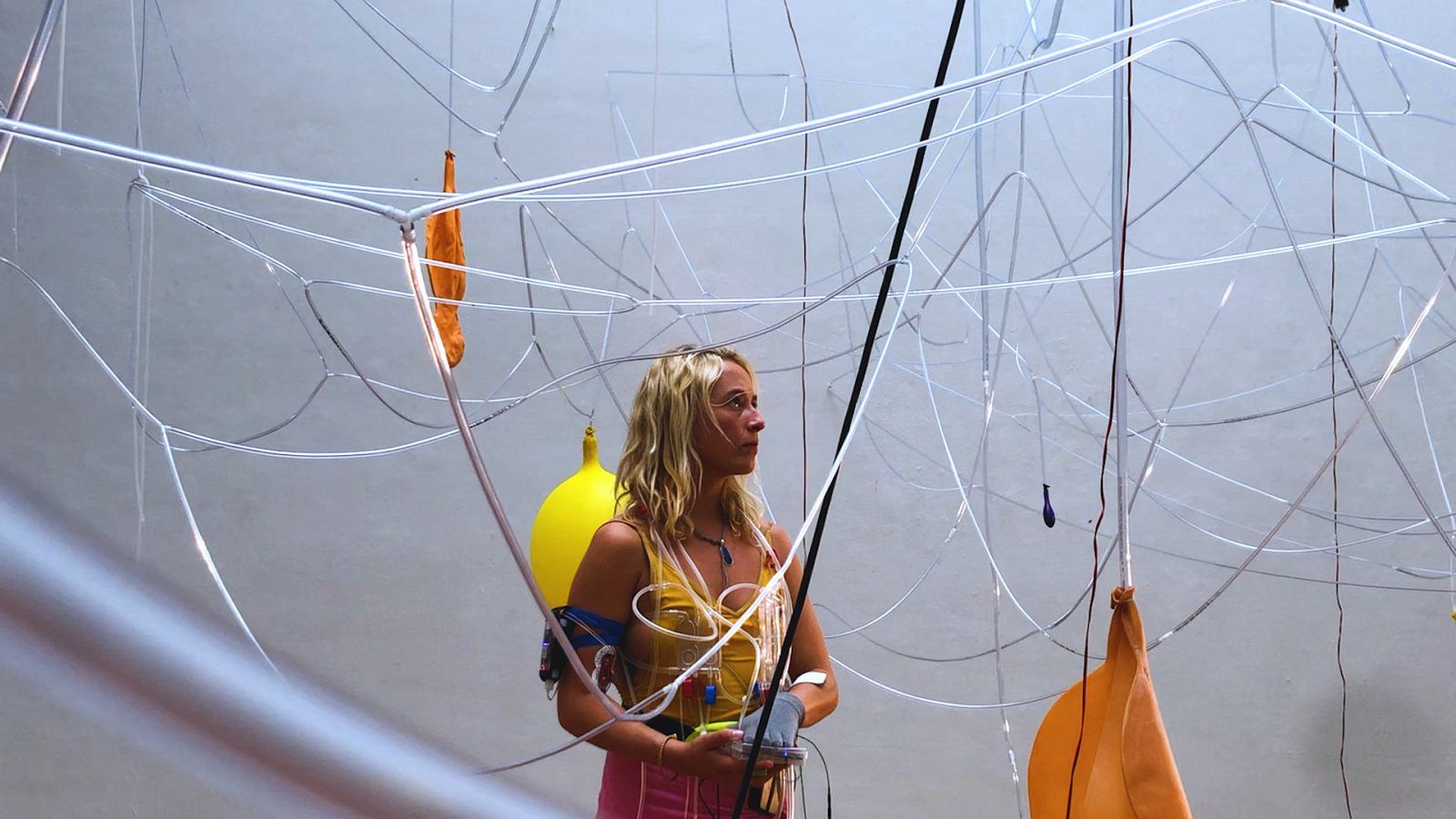

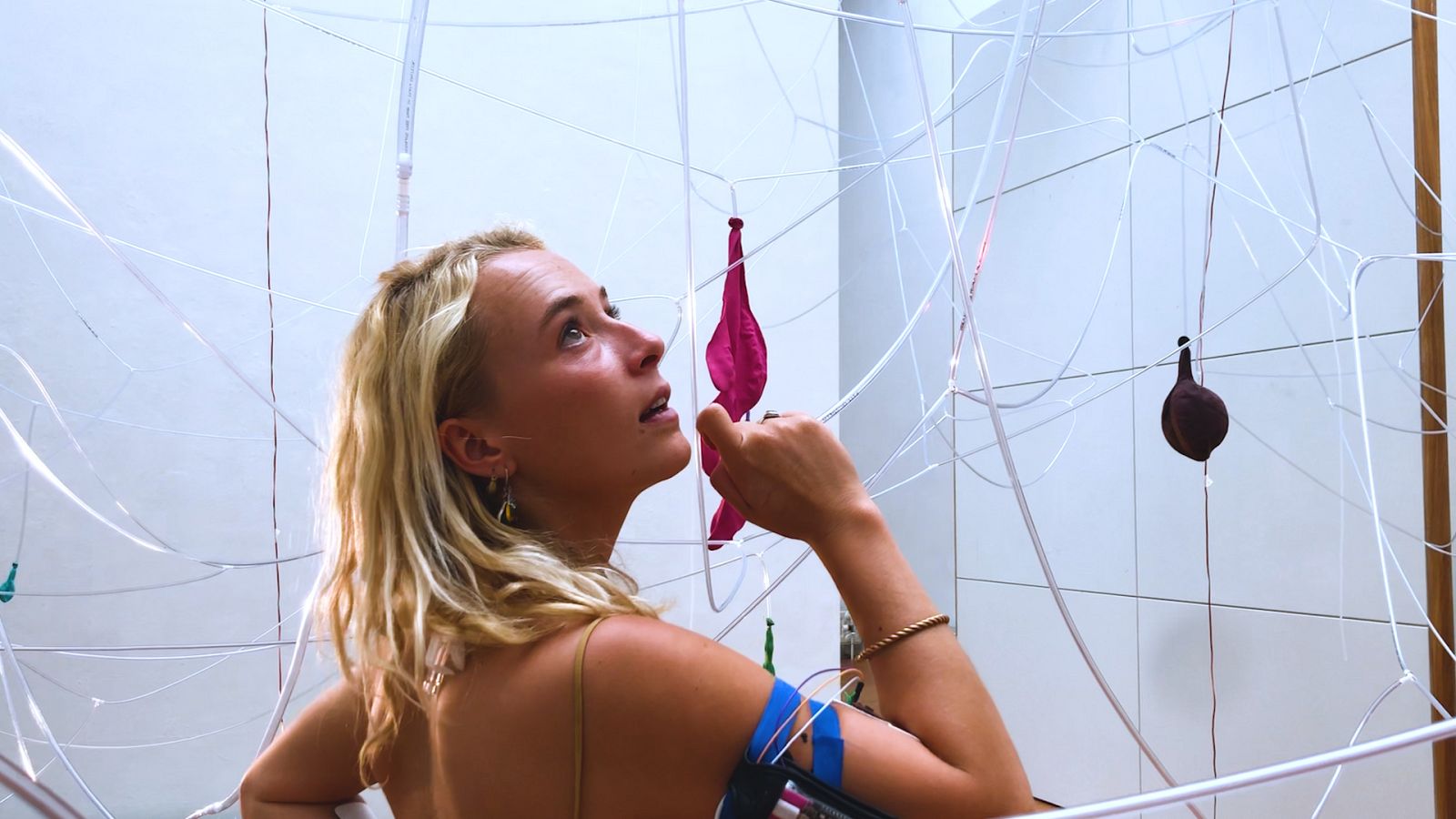
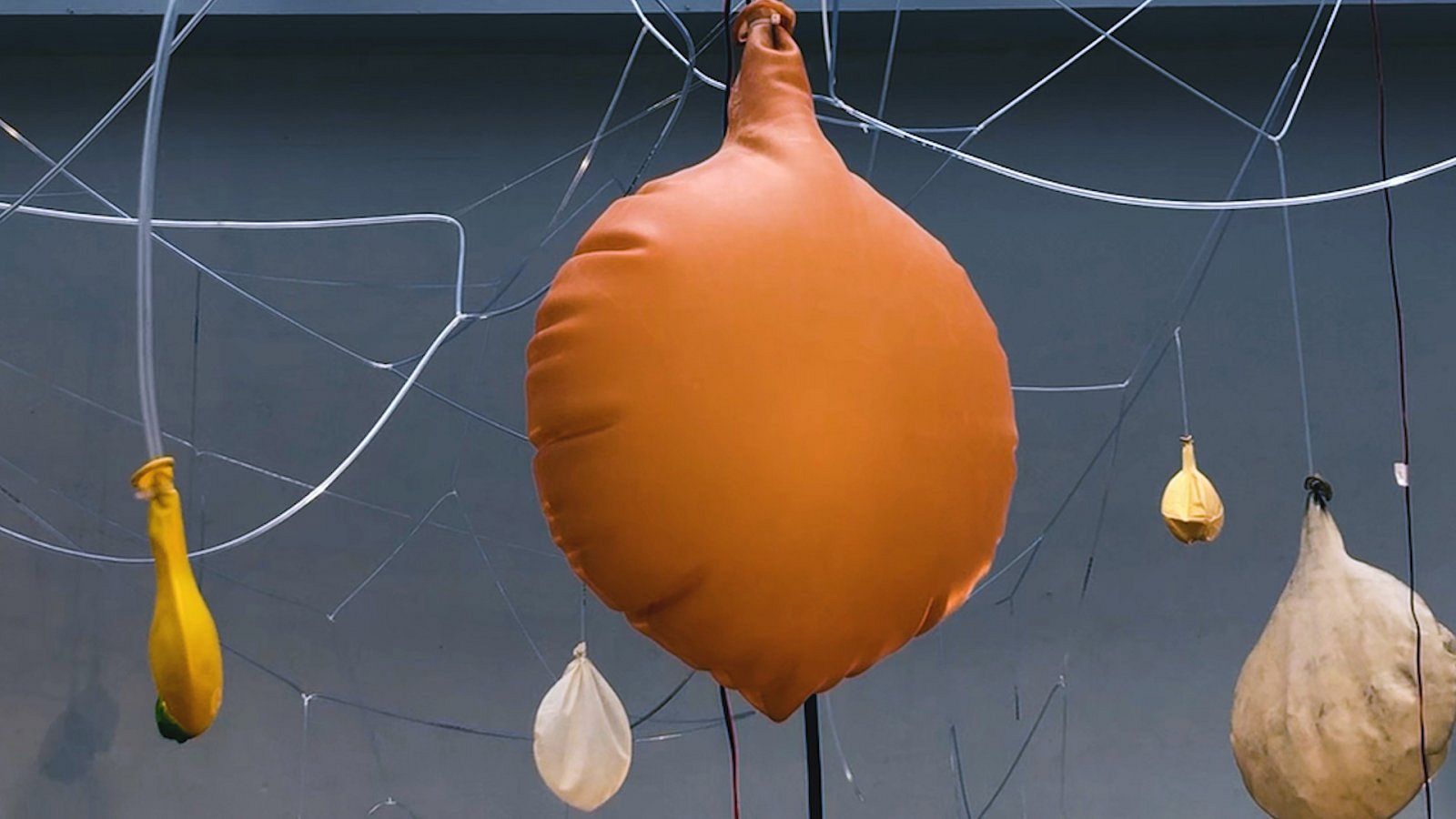

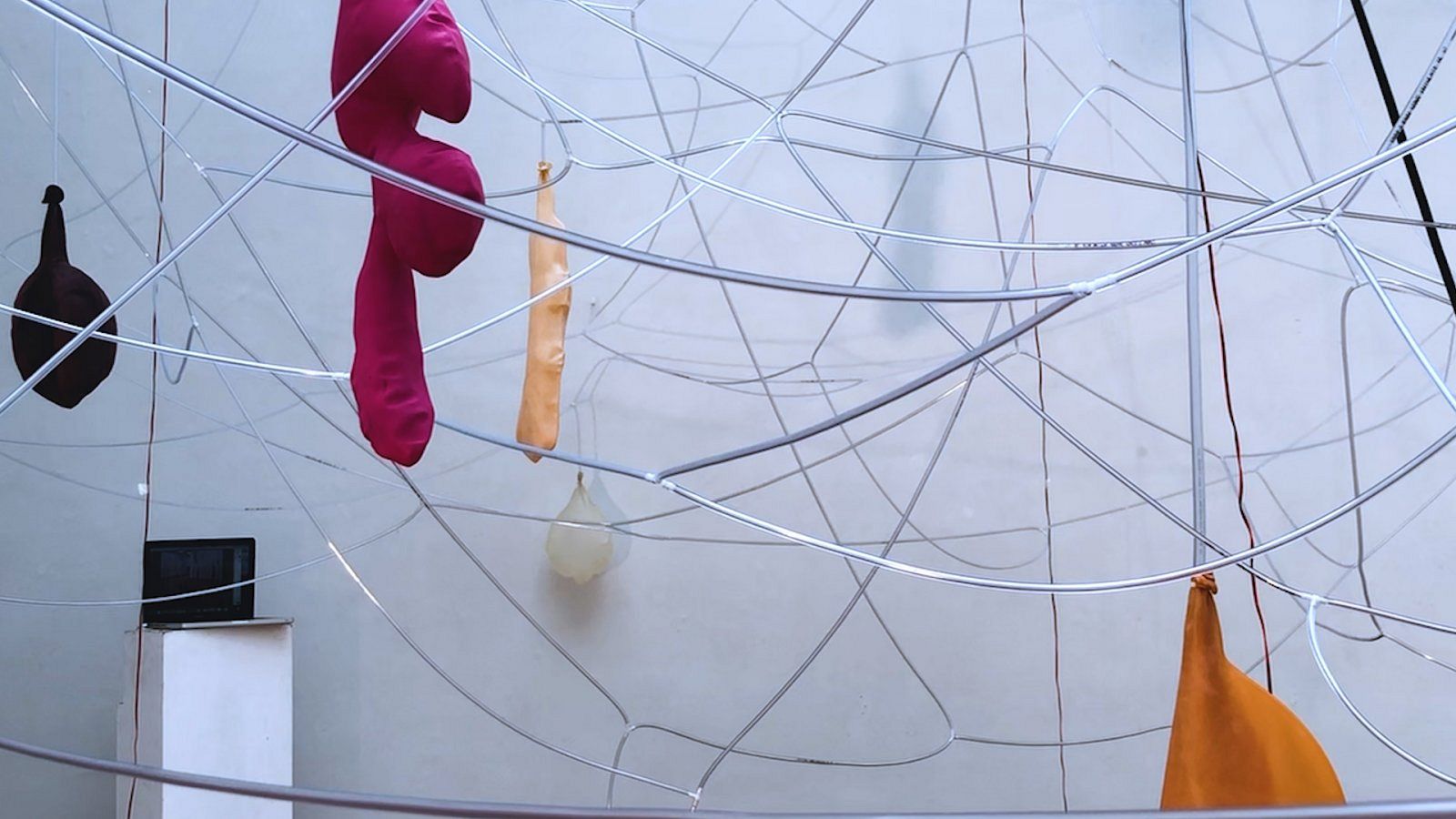

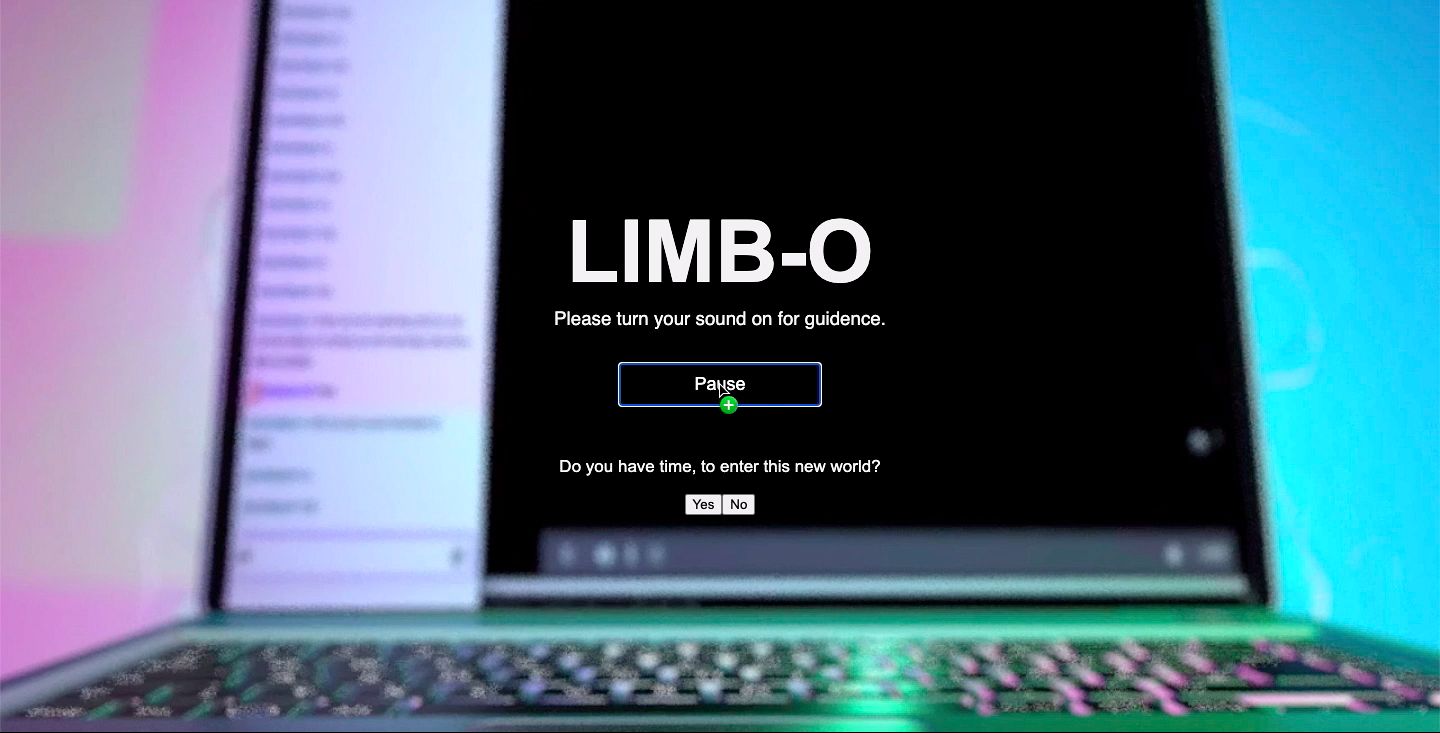
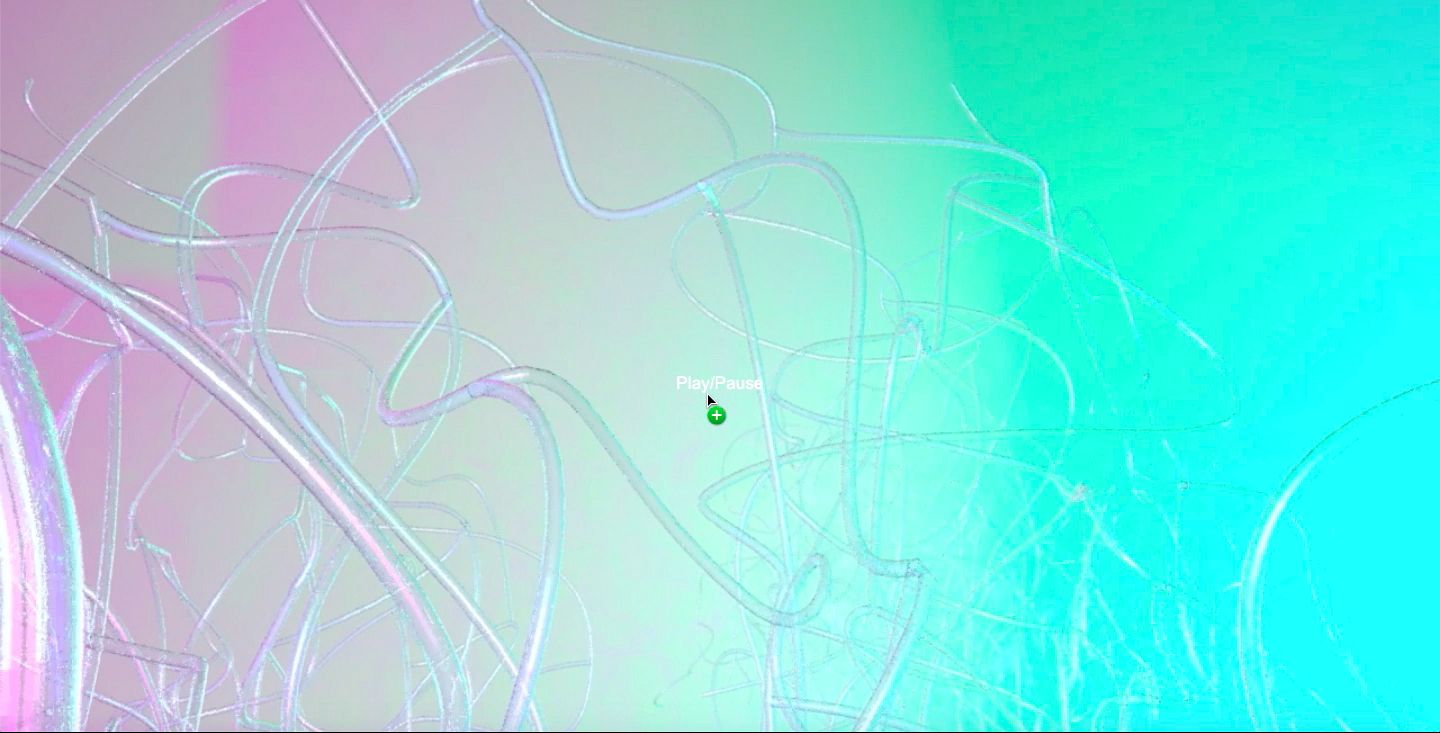
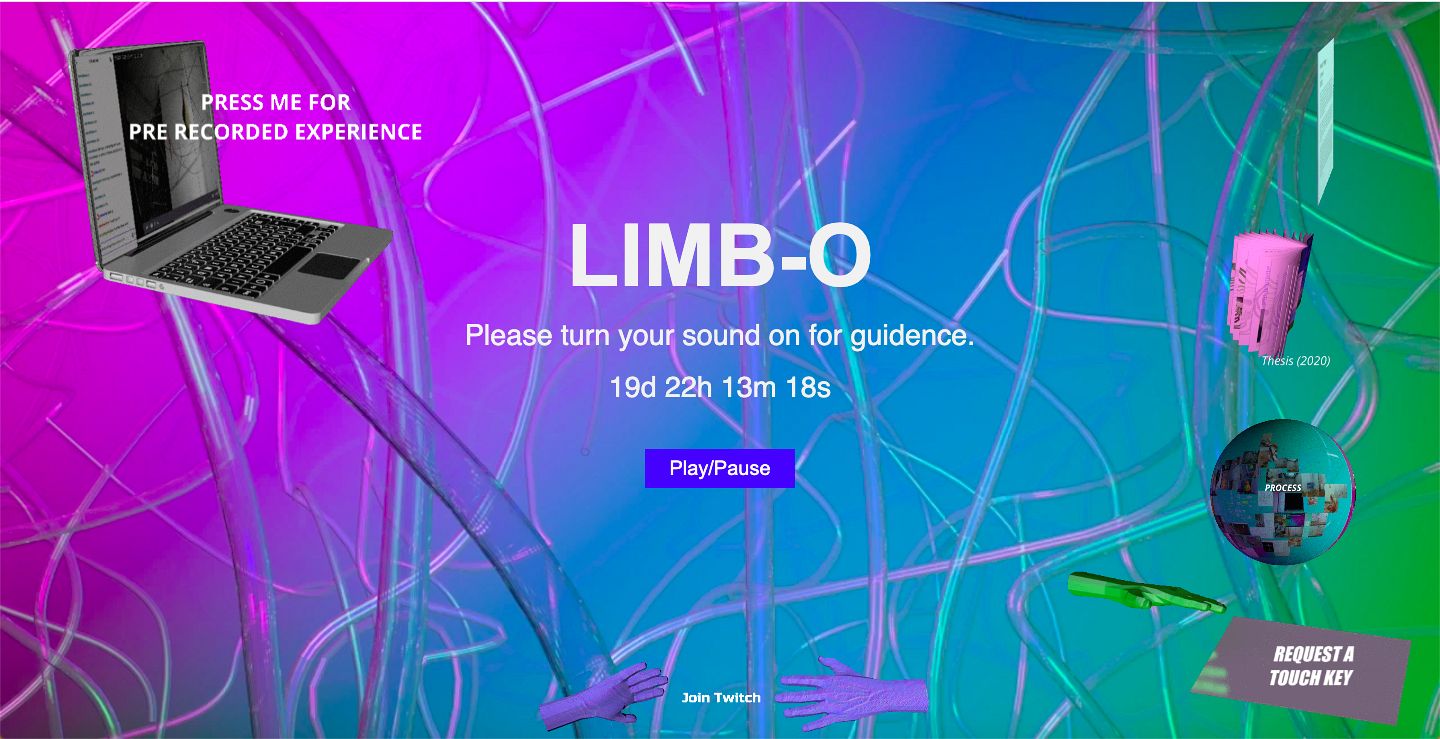


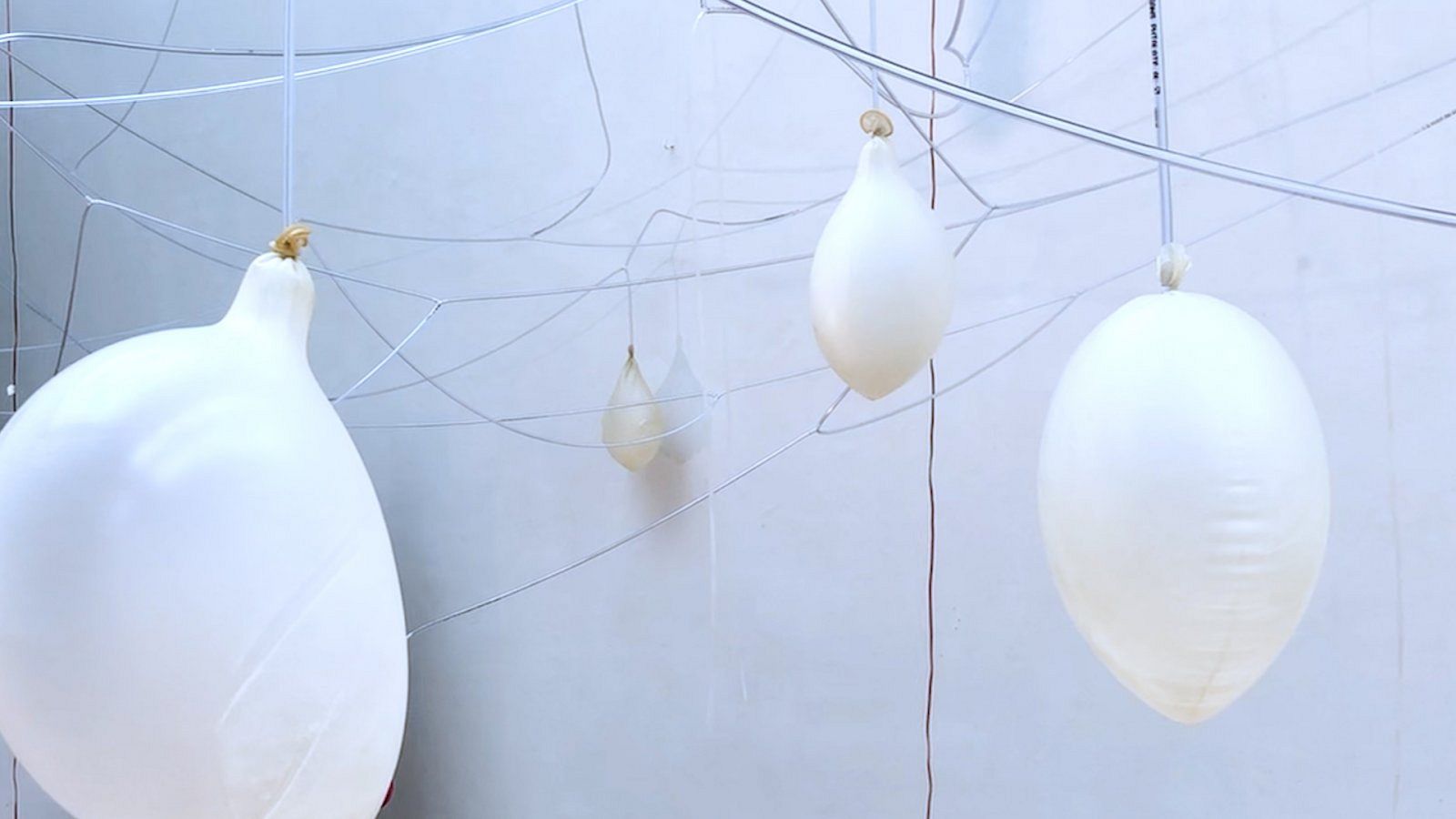
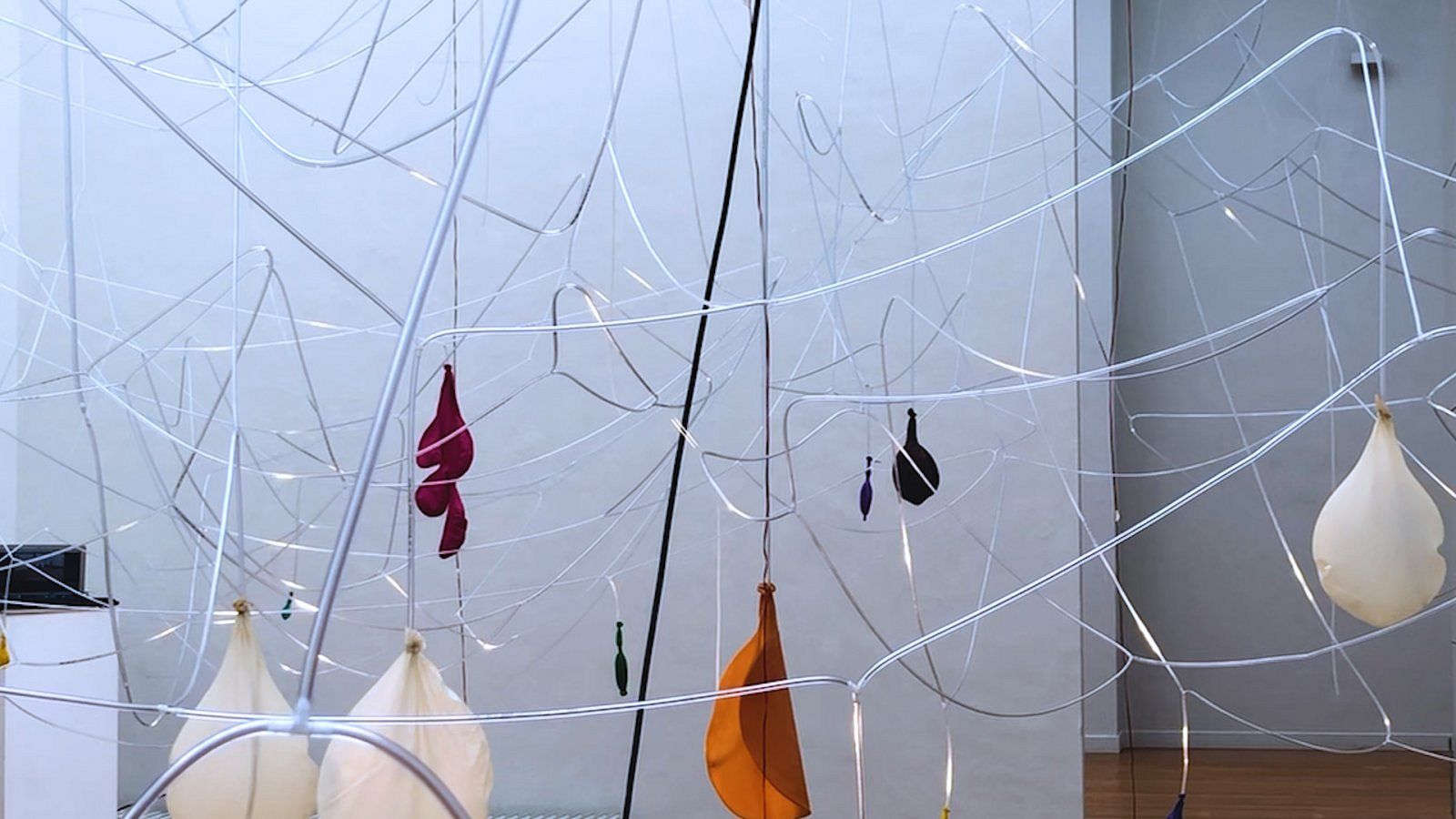
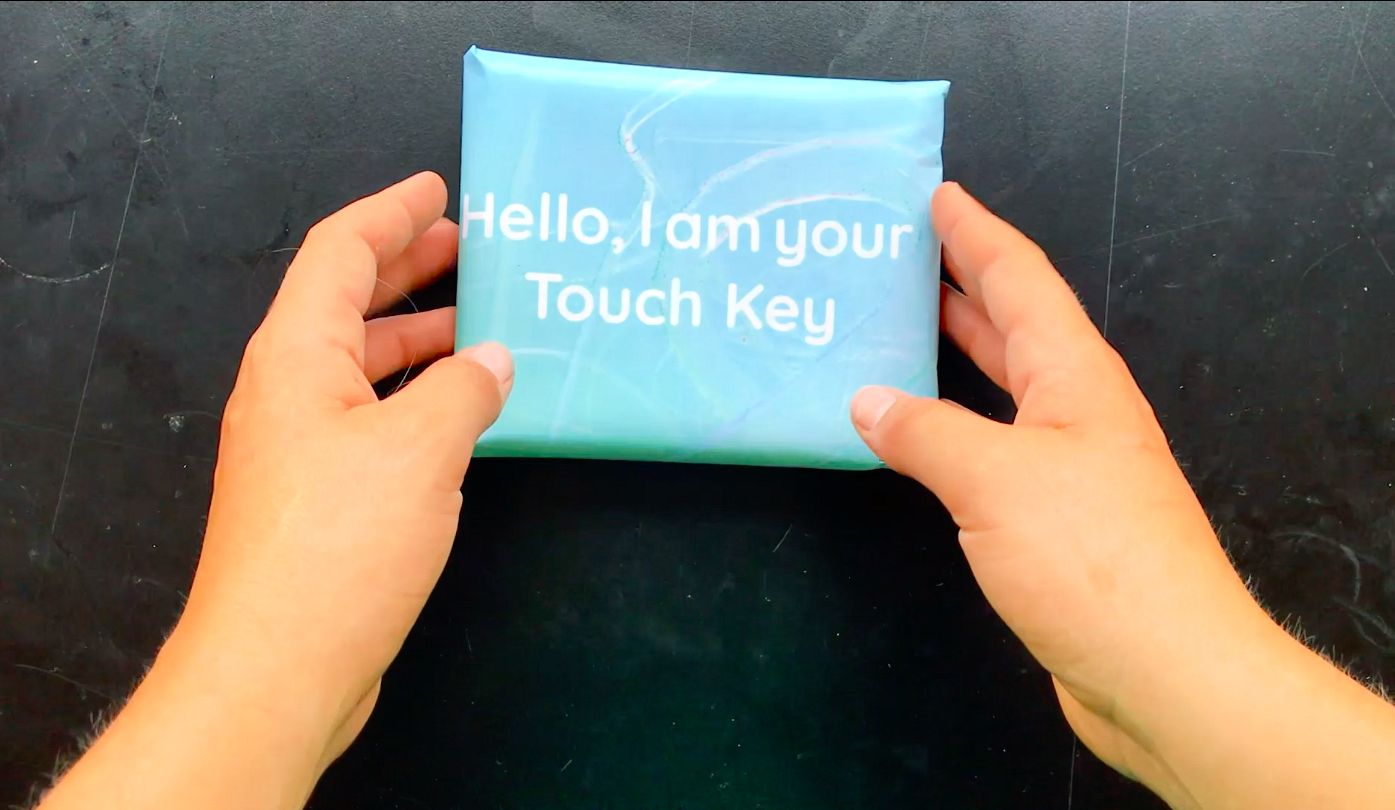
THESIS
Embodied Multi {( body; space; time; performance )}
This thesis has been nominated for the Bachelor's Thesis Prize
Technology has created an interconnected, globalised world, with digital experiences reshaping our terms of existence and presenting us with bewildering opportunities and threats. Yet we feel we are moving further away from what it means to be human as we lose our connection to our bodies, nature and our immediate environment. But a disembodiement simply means a shift of focus from object to communication and interaction. What does it then mean, to be embodied in a mediated world? Are there new possibilities that only exist in the liminal spaces between physical and virtual?
The growing mistrust in online communications and digital platforms due to surveillance and data marketing is feeding our primal instinct to protect ourselves and our data. Our fear is moving us towards embracing the new and anonymous. Due to the digital dependence of the modern day capitalist economy, we see that many of our civil actions such as banking, shopping, socializing and voting often take place in digital space.
With many of these actions playing a large role in creating our identity in real life, this fear of losing privacy is a logical reaction. But the fact of the matter is that we are dependent on digital spaces. We cannot unthink technology and our networked interdependencies, but we can think through and within these structures by understanding them.
By understanding the characteristics with which we, our expressions and experiences, are transformed as they transcend this physical reality to a virtual, digital space we are able to view its plasticity as a means of collaboration, of creating new narratives with little parts of us in it. To understand that creation was never a singular activity but an expression of all that was and will be.
What I am interested in is how to investigate this further through creating artworks which facilitate the communication of physical bodies in a shared space and their digital transformation,bothwithinthesame time frame via live stream, and their evolution when the physical bodies are no longer active. I am not in favour of one conception of the body in time over the other; I do think, however, that it’s possible for one to seriously conceive of their bodies as being in two (or more) places at once. Perhaps not bodies but the expressions of their bodies, not just a physical body but the body of data and information that exists within them.
Since the moment humans could dream or imagine something outside the boundaries of their skin, a part of us was already existing in alternative spaces. Due to technological developments, there are only more places to be at once. It is not that we are losing something when we exist and express in virtual spaces, it is simply that the focus has shifted from the object, to the interaction, the communication.
What digital media is lacking today is the necessary feedback loops, where a system of communication is not based on a one-to-many broadcast, but on a many-to-many, or peer-to- peer feedback system with a focus on context, interaction and reaction, rather than content. We are lacking the liveness, the presence and the tension that is created when these factors are present.
Digital media has offered us new possibilities of experience with a tap of our fingers, yet we miss this essence of liveness and presence when we know we are only in a simulation or watching a screen. In contrast to this, live performance art is regarded as a sacred, ephemeral experience which is able to reach intimate inners of the audience, and evoke real emotions.
Is there an alternative way of using this tool of storytelling and expression in a mediated world? Are there new ways of experiencing bodies and their expressions without being physically co-present, but yet in the same space and time?
Is there a future in live streaming as the outlet to reach these strangers in domestic private spaces, to our childhood homes or distant imaginary places in a way which embodies the multiplicity of spaces, of our bodies and our experiences?